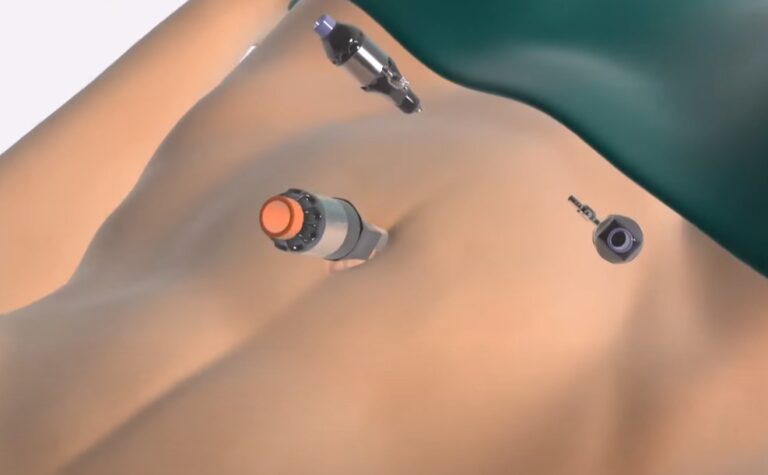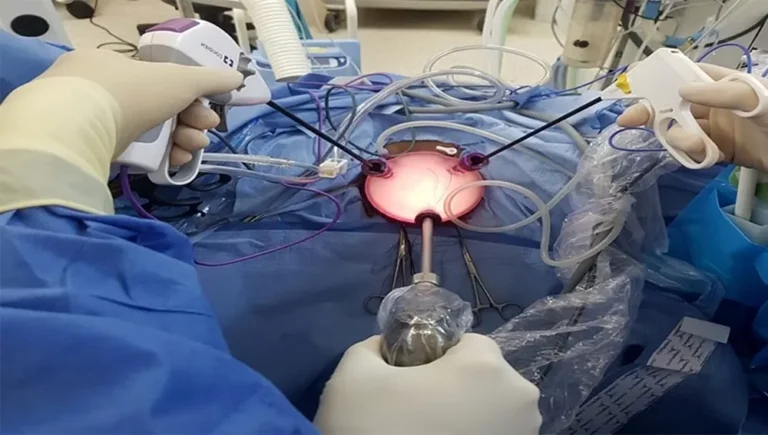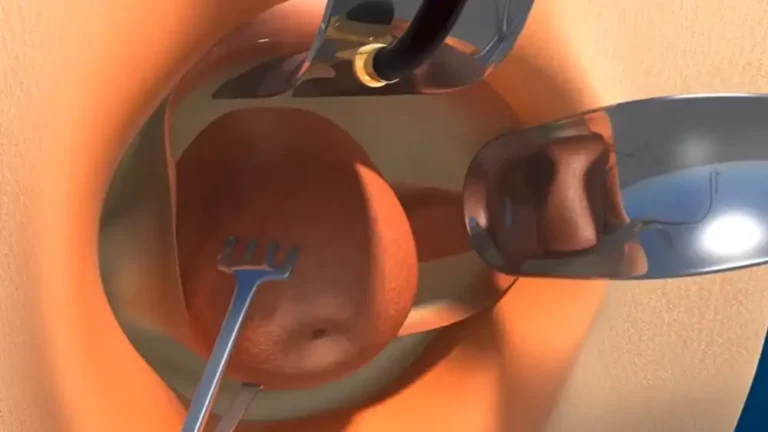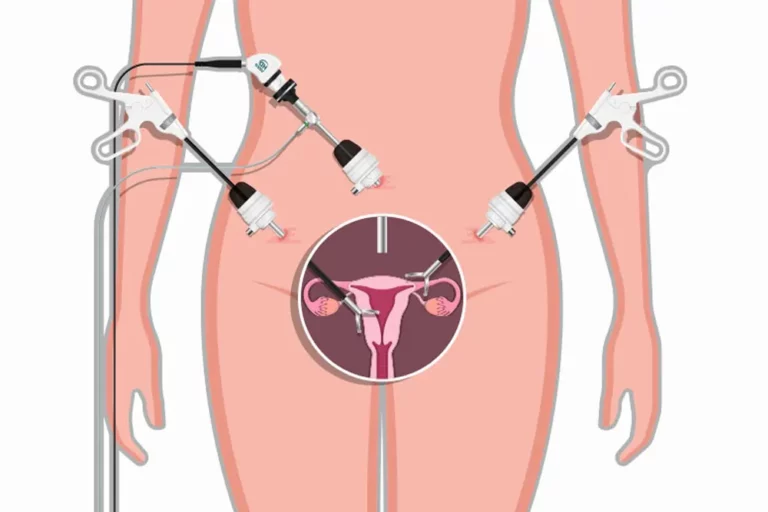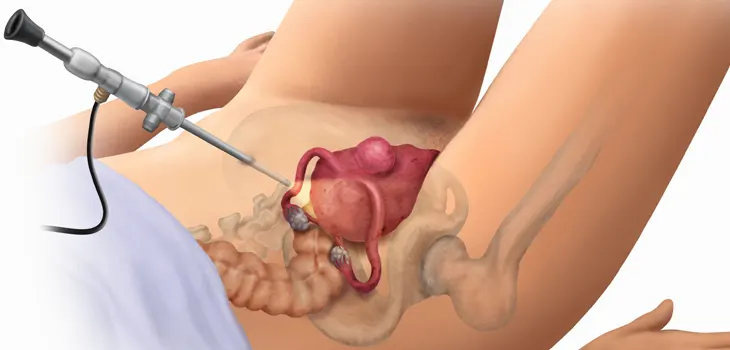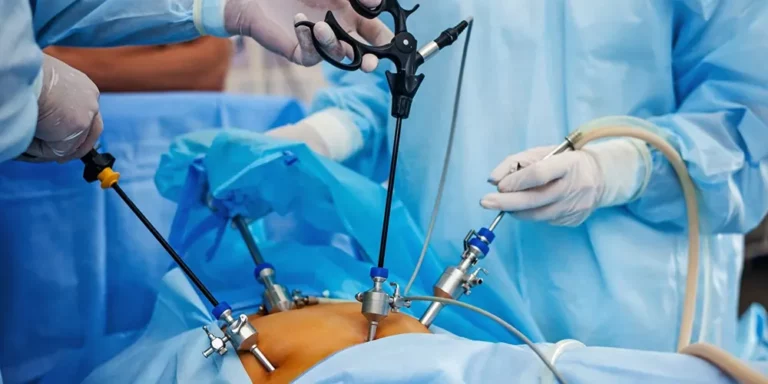Exploring Robotic Hysterectomy: The DaVinci hysterectomy
Recent years have witnessed remarkable advancements in medical technology, giving rise to robotic-assisted methods like robotic hysterectomy, laparoscopic hysterectomy, and the groundbreaking Da Vinci Surgical System. Through this blog post, we will explore these options in-depth and illuminate the advantages of utilizing minimally invasive robotic surgery for hysterectomy.
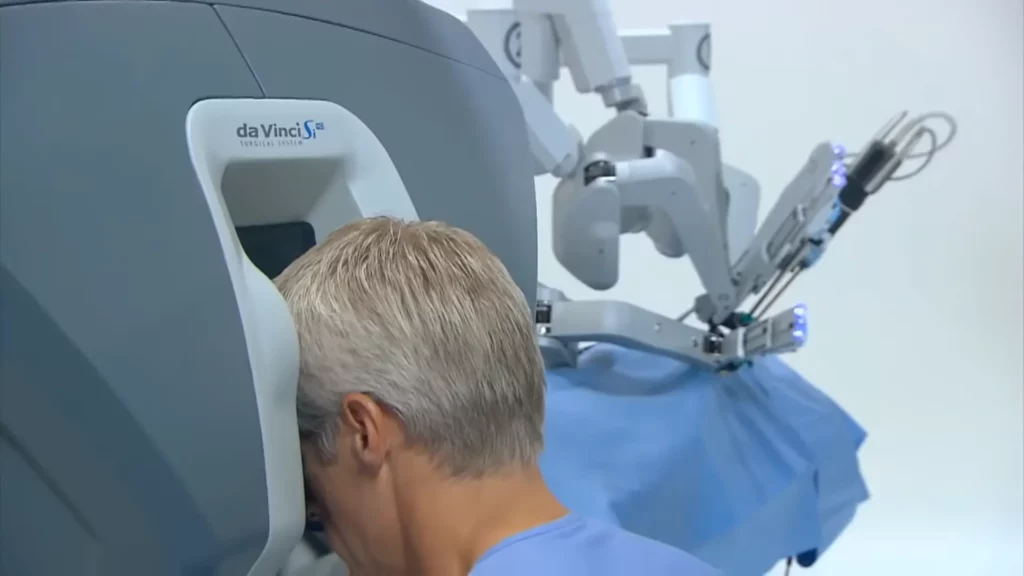
Understanding Hysterectomy
Hysterectomy, a prevalent surgical procedure, is often advised for diverse conditions such as uterine fibroids, endometriosis, uterine prolapse, and specific types of cancer. In the past, the conventional method involved open abdominal surgery, necessitating a substantial incision in the abdomen. Nevertheless, technological progress has facilitated the development of less invasive alternatives.
The Rise of Robotic Hysterectomy
The field of gynecological surgery has undergone a revolution with the advent of robotic hysterectomy. Leveraging the capabilities of the da Vinci Surgical System, surgeons can now achieve heightened precision and control during hysterectomies. This robotic-assisted technique presents numerous advantages over traditional open surgery, such as smaller incisions, diminished pain, accelerated recovery, and shorter hospitalization periods.
Minimally Invasive Surgery approach to hysterectomy
The advantages of minimally invasive surgery, encompassing robotic and laparoscopic techniques, have led to its widespread adoption. In a laparoscopic hysterectomy, surgeons make small incisions in the abdomen, enabling them to perform the procedure using specialized surgical instruments and a visualization camera. Robotic surgery takes this innovation a step further by equipping the surgeon with robotic arms, augmenting their dexterity and expanding the range of motion during the surgical intervention.
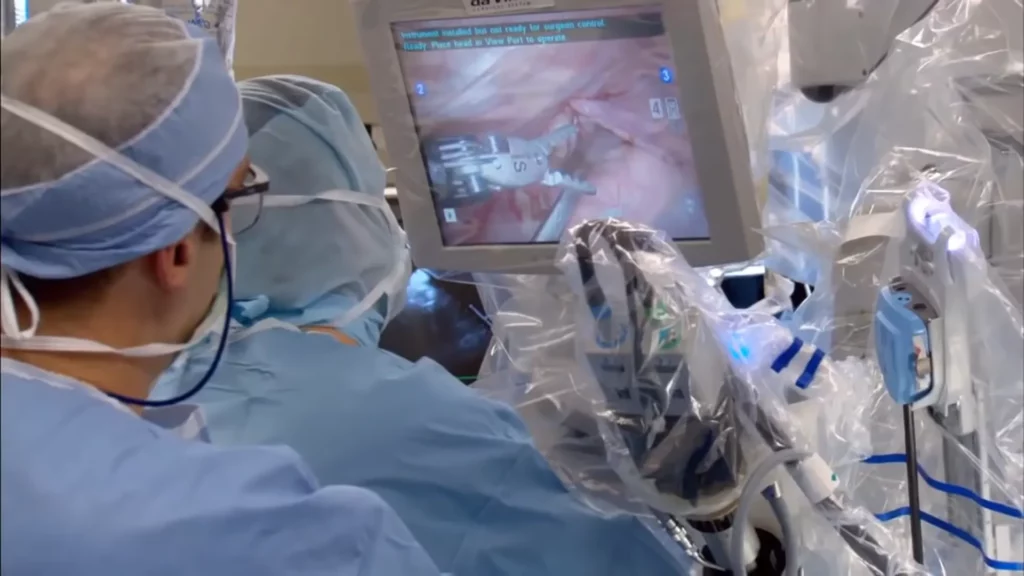
Exploring the DaVinci Hysterectomy Surgical System
Utilized in a range of surgical procedures, including hysterectomy, the da Vinci Surgical System stands as an advanced robotic technology. By merging high-definition 3D visualization, precise instruments, and robotic assistance, this state-of-the-art system empowers surgeons to execute intricate surgeries with unparalleled accuracy. It seamlessly translates the hand movements of the surgeon into precise robotic actions, ultimately enhancing outcomes and facilitating a swifter recovery for patients.

Types of Robotic Hysterectomy (including supracervical hysterectomy)
Robotic hysterectomy can be performed in different ways, depending on the specific condition and patient’s needs. Some common types include:
- Total Hysterectomy: In this procedure, the uterus and cervix are removed.
- Supracervical Hysterectomy: This approach involves removing the uterus while preserving the cervix.
- Radical Hysterectomy: It is performed for certain cases of gynecological cancer, involving the removal of the uterus, cervix, and surrounding tissues.
Comparing Robot-assisted and Traditional Approaches
Robotic hysterectomy offers several advantages compared to traditional open surgery. These include:
- Smaller incisions, resulting in reduced scarring and less post-operative pain.
- Minimally invasive procedure, leading to faster recovery and shorter hospital stays.
- Enhanced precision and dexterity for the surgeon, thanks to the robotic assistance.
- Reduced risk of complications and infection.
The Recovery Process from robot-assisted surgery
After undergoing a robotic hysterectomy, patients generally observe a speedier recovery in comparison to traditional open surgery. The smaller incisions and minimized impact on surrounding tissues play a role in facilitating a prompt return to regular activities. It is important to note that individual recovery experiences may vary, underscoring the significance of adhering to the post-operative instructions provided by the surgeon.
Consultation and Considerations
If you are considering a hysterectomy, it is crucial to consult with a skilled surgeon who specializes in robotic procedures. They can evaluate your specific condition and determine the most suitable approach for your case. Make sure to ask your doctor about the potential risks and benefits of robotic-assisted surgery and address any concerns you may have.
Conclusion: Robotic procedure
The introduction of robotic hysterectomy has brought about a revolutionary transformation in gynecological surgery. This approach presents a minimally invasive alternative that delivers superior outcomes and accelerated recovery. Through the utilization of smaller incisions, robotic arms, and the precise capabilities of the da Vinci Surgical System, surgeons can perform uterus removal with heightened precision and minimal impact on surrounding tissues.
Robotic hysterectomy is especially beneficial for patients seeking a quicker recovery and reduced post-operative pain. Compared to traditional open abdominal surgery, the smaller incisions result in less scarring and discomfort. The robotic assistance allows surgeons to navigate delicate structures with enhanced dexterity, ensuring a thorough and precise procedure.
Alongside the benefits of robotic surgery, laparoscopic hysterectomy presents an additional choice for minimally invasive procedures. With this technique, the surgeon creates small incisions in the abdomen, enabling the insertion of specialized instruments and a visualization camera. Laparoscopic hysterectomy not only ensures expedited recovery but also entails shorter hospital stays when compared to open surgery.
When contemplating a hysterectomy, it is crucial to engage in a discussion with your surgeon regarding the available options. Factors such as the specific condition being addressed, the size of the uterus, and the surgeon’s expertise will shape the recommended approach. Your surgeon will assess your unique case and offer guidance on the most suitable surgical technique for your situation.
It is important to acknowledge that robotic hysterectomy may not be appropriate for all individuals. Certain situations, such as specific cancer types or extensive pelvic adhesions, may require an open abdominal hysterectomy. Your surgeon will evaluate the specific circumstances surrounding your case and provide personalized recommendations to ensure your health and well-being are prioritized.
Following a robotic or laparoscopic hysterectomy, the recovery period generally entails a shorter hospital stay and decreased downtime compared to open surgery. Patients may encounter reduced post-operative pain and a quicker resumption of their regular activities. However, it is imperative to diligently adhere to your surgeon’s post-operative instructions to facilitate a seamless recovery process and mitigate any potential complications.
To sum up, both robotic hysterectomy and laparoscopic hysterectomy have revolutionized the realm of gynecological surgery. These minimally invasive methods, assisted by cutting-edge robotic technology, provide a multitude of advantages, including smaller incisions, expedited recovery, and enhanced surgical precision. When contemplating a hysterectomy, it is essential to consult a skilled surgeon to identify the most appropriate approach tailored to your specific requirements. By embracing these advancements in surgical techniques, patients can undergo uterus removal with diminished pain, minimized scarring, and a swift resumption of their daily routines.
FAQs about DaVinci Hysterectomy
Q: How does DaVinci hysterectomy differ from other types of hysterectomy?
A: Da Vinci hysterectomy differs from other types of hysterectomy, such as open hysterectomy or laparoscopic hysterectomy, in that it utilizes robotic assistance. The surgeon controls the robotic arms, which provide increased dexterity and maneuverability during the procedure.
Q: Is DaVinci hysterectomy a common surgery?
A: Yes, Da Vinci hysterectomy is a common surgical procedure. It has gained popularity due to its minimally invasive approach and the advantages it offers in terms of smaller incisions, faster recovery, and reduced pain.
Q: What is the difference between vaginal hysterectomy and robotic-assisted hysterectomy?
A: Vaginal hysterectomy is a surgical procedure where the uterus is removed through the vagina, while robotic-assisted hysterectomy involves the use of robotic technology to aid the surgeon in performing the procedure with enhanced precision.
Q: Does laparoscopic surgery offer less pain compared to traditional surgery?
A: Yes, laparoscopic surgery, including robotic-assisted hysterectomy, is known for its minimally invasive nature, which often leads to less post-operative pain compared to traditional surgery. The smaller incisions used in laparoscopic approaches contribute to a more comfortable recovery experience.
Q: How is a DaVinci robotic hysterectomy performed?
A: A Da Vinci robotic hysterectomy is performed using the Da Vinci Surgical System, where the surgeon controls robotic arms to remove the uterus. This advanced technology allows for greater precision and maneuverability in the operating room.
Q: What are the advantages of a robotic-assisted hysterectomy?
A: Robotic-assisted hysterectomy, such as the Da Vinci robotic hysterectomy, offers several advantages, including smaller incisions, shorter recovery time, and reduced pain compared to traditional hysterectomy procedures. The robotic-assisted approach allows for a more precise and minimally invasive surgery.
Q: Is a robotic hysterectomy the best approach for every patient?
A: The suitability of a robotic hysterectomy is determined by several factors, including the individual’s specific condition and the expertise of the surgeon. It is crucial to seek consultation from a skilled surgeon who can assess your case and advise on the most suitable approach to hysterectomy based on your unique circumstances.
